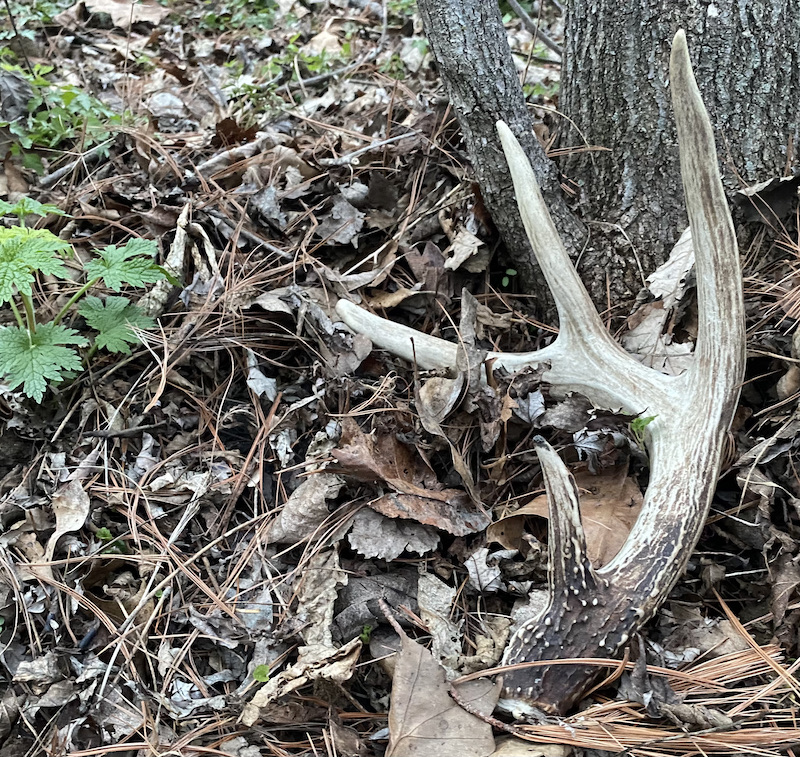Keep your eyes peeled
Shed hunters are on the search for golden ivory
Every spring avid hunters hit the hills and walk up to 30 miles in search of golden ivory: large Whitetail sheds.
Shed hunting is a rapidly growing sport. Walking miles upon miles might not sound appealing, but the amount of adrenaline and excitement when finding that shed you’ve looked so hard for can’t be put into words. As the sport of shed hunting has continued to grow, some ranches will charge as much as $2,000 for a week-long guided shed hunting trip and even provide housing and food. Although people can pay big bucks to shed hunt, you don’t have to. Throughout each state, there’s lots of public ground which is free to shed hunt along with any property you own or can get access to.
“Shed hunting is a great way to stay active and get outside,” shed hunter Blake Williams said. “It’s also a great way to keep track of bucks that made it through the winter and even helps pinpoint where they travel.”
Often, shed hunters will walk over three miles before they find a shed. With that being said, it doesn’t have to be that hard. Bucks usually drop their antlers in a handful of places that can easily be pinpointed.
“The best places to find sheds are on the sides of creeks and fences, bedding areas, trails with heavy cover, and food sources,” shed hunter enthusiast Garrett West said.
When a buck is ready to shed its antlers, all it takes is a small jolt to the head which is why sides of creeks and fences are great places to look along with where downed trees are in main travel corridors. The amount of time bucks spend in bedding and feeding areas is what makes them such great places to look. Trails with heavy cover are great because the low-hanging branches can knock the antlers right off as the bucks travel through.
“Shed hunting helps me track our deer growth and can even bring in some money,” shed hunter Jacob Ward said. “My dad and I sometimes take the sheds we find and make cool light fixtures and decorations.”
If you walk into a large outdoor retailer such as Scheels or Cabelas, you might see large antler chandeliers or different decorations made of deer antlers that most likely came from shed hunters. Shed hunters can take their sheds to local artists or antler shops who then turn the antlers into decorative pieces to then be sold to stores. Some places pay as much as $10 per pound for top-notch sheds. Top-notch sheds generally score over 80 inches and are heavy white ivory. One pair of top-notch sheds can bring in over $300 alone. With the average shed weighing between 3-9 pounds, one good day of shed hunting could bring in over $1,000.
“Shed hunting has been a part of my life for a very long time,” Garrett West said. “I’ve been shed hunting for as long as I can remember and will continue to as long as I’m able to.”







